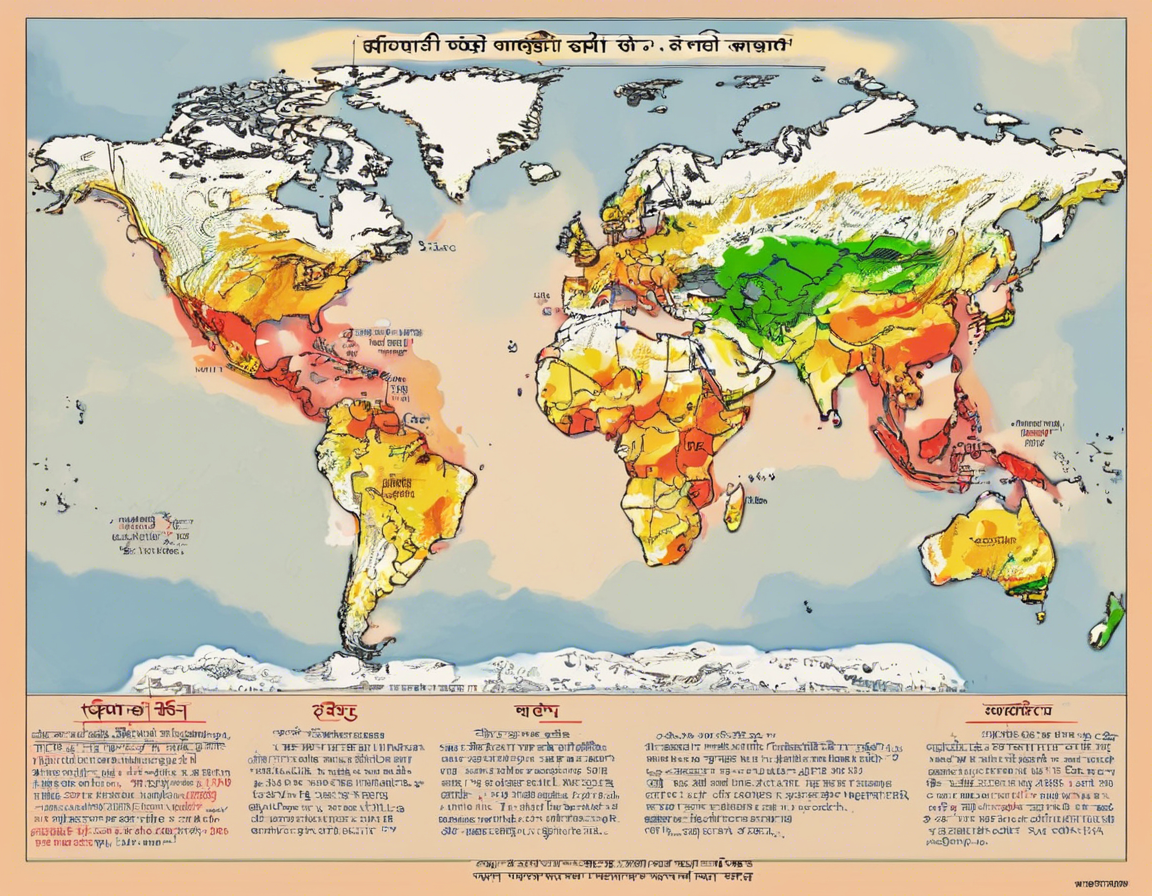Understanding Global Warming in Hindi: A Comprehensive Guide

With the increasing concern about climate change and its impact on our planet, it is essential to have a clear understanding of global warming and its implications. In this article, we will delve into the concept of global warming, its causes, effects, and potential solutions. We will also discuss how global warming is affecting India and what steps can be taken to mitigate its effects.
What is Global Warming?
Global warming refers to the long-term increase in Earth’s average surface temperature due to human activities, primarily the emission of greenhouse gases such as carbon dioxide (CO2), methane (CH4), and nitrous oxide (N2O) into the atmosphere. These gases trap heat from the sun, leading to a gradual rise in temperatures worldwide. The fundamental principle behind global warming is the enhanced greenhouse effect, where human activities intensify the natural greenhouse effect, causing the planet to heat up.
Causes of Global Warming
-
Burning of Fossil Fuels: The combustion of fossil fuels such as coal, oil, and natural gas for energy production releases large amounts of CO2 into the atmosphere.
-
Deforestation: Trees play a crucial role in absorbing CO2 from the atmosphere. Deforestation reduces the planet’s capacity to sequester carbon, leading to increased CO2 levels.
-
Industrial Activities: Manufacturing processes, agriculture, and waste management activities emit significant amounts of greenhouse gases, contributing to global warming.
-
Transportation: Vehicles running on fossil fuels release CO2 and other pollutants into the air, further exacerbating the problem.
Effects of Global Warming
-
Rising Temperatures: Global warming leads to increased temperatures, resulting in heatwaves, melting polar ice caps, and rising sea levels.
-
Extreme Weather Events: Climate change intensifies extreme weather phenomena such as hurricanes, droughts, floods, and wildfires.
-
Impact on Ecosystems: Changes in temperature and precipitation patterns disrupt ecosystems, causing loss of biodiversity and habitat destruction.
-
Health Risks: Global warming contributes to the spread of diseases, heat-related illnesses, and poor air quality, posing risks to human health.
-
Water Scarcity: Changes in precipitation patterns can lead to water scarcity in certain regions, impacting agriculture, livelihoods, and overall water security.
Global Warming in India
India is particularly vulnerable to the impacts of global warming due to its vast population, high levels of poverty, and extensive dependence on agriculture. The country is experiencing a range of climate change effects, including erratic monsoons, heatwaves, glacial melting, and sea-level rise. These changes pose significant challenges to food security, water resources, and public health in India.
Mitigation and Adaptation Strategies
-
Transition to Renewable Energy: Investing in renewable energy sources such as solar and wind power can help reduce CO2 emissions from fossil fuel combustion.
-
Afforestation and Reforestation: Planting trees and restoring degraded forests can enhance carbon sequestration and biodiversity conservation.
-
Energy Efficiency: Improving energy efficiency in industries, buildings, and transportation can lower greenhouse gas emissions and combat global warming.
-
Water Conservation: Implementing water conservation measures can help mitigate the impacts of water scarcity exacerbated by climate change.
-
Climate-Resilient Agriculture: Promoting sustainable farming practices and crop diversification can build resilience to climate variability and ensure food security.
Frequently Asked Questions (FAQs)
1. What is the difference between global warming and climate change?
Global warming refers to the increase in Earth’s average temperature, while climate change encompasses broader shifts in climate patterns, including temperature, precipitation, and extreme events.
2. How do greenhouse gases contribute to global warming?
Greenhouse gases trap heat in the Earth’s atmosphere, preventing it from escaping into space and causing a warming effect known as the greenhouse effect.
3. Is global warming a natural phenomenon?
While natural factors contribute to climate variability, human activities have significantly accelerated global warming in recent decades.
4. How does global warming affect marine ecosystems?
Rising sea temperatures and ocean acidification due to global warming harm marine biodiversity, coral reefs, and fish populations, impacting coastal communities and economies.
5. What role can individuals play in combating global warming?
Individuals can reduce their carbon footprint by conserving energy, using public transportation, recycling, and supporting sustainable practices in their daily lives.
6. How is global warming linked to social justice issues?
Global warming disproportionately affects vulnerable communities, including low-income populations, indigenous peoples, and marginalized groups, exacerbating existing social inequalities.
7. How can technology help mitigate global warming?
Technological innovations such as carbon capture and storage, renewable energy technologies, and sustainable agriculture practices can contribute to reducing greenhouse gas emissions and combating global warming.
8. What are the international efforts to address global warming?
The Paris Agreement, signed by nearly 200 countries, aims to limit global warming to well below 2 degrees Celsius above pre-industrial levels and pursue efforts to limit the temperature increase to 1.5 degrees Celsius.
9. How is global warming impacting biodiversity and endangered species?
Changes in temperature and habitat loss due to global warming threaten biodiversity, leading to species extinction, ecosystem degradation, and disruption of ecological balance.
10. What are the economic costs of global warming?
The economic costs of global warming include damage to infrastructure, agriculture, health systems, and tourism, as well as increased expenditures on disaster relief and adaptation measures.
In conclusion, global warming poses a significant threat to our planet and requires urgent action at the individual, community, national, and global levels. By understanding the causes and effects of global warming and implementing mitigation and adaptation strategies, we can work towards a sustainable future for generations to come.
